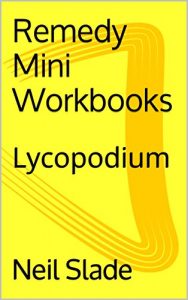The Remedy Mini Workbook range is a series of books for the student of homeopathy or naturopathy. Each workbook takes a single remedy and looks at the most characteristic indications of this remedy. Where possible the descriptions of mental and emotional characteristics, physical characteristics and disease processes will be linked to the remedy’s botany, biology or chemistry in order to aid understanding and memory recall.
Within each workbook you will find a remedy crib card, which contains all the key characteristics of the remedy that you can transfer to an index card for clear and concise revision.
Students often find themselves lost in the complex materia medica world of detailed remedy descriptions and long lists of facts with little to latch the facts onto for easy remembering. These workbooks explain what the essence of each remedy is and how to remember that detail: first of all to successfully complete your course of study, and secondly to fix the remedy mentally for easy recall in practitioner/patient interactions.
This particular workbook focuses on the polycrest remedy Lycopodium. Within its pages you will find the essence of Lycopodium and the reasons why it presents in a particular way. Key physical indications are given along with common therapeutic indications. Comparisons of other remedies that might show similar traits and how to differentiate between them are also discussed. Keynote modalitites; food desires and aversions; strange, rare and peculiar (SRP) signs and symptoms and also acute/chronic and bowel nosode remedy links are given.
Once you have studied the information there are 30 self-test questions based on the material. Answers to these questions are not supplied so that the student has to return to the text in order to find where they have been successful or made mistakes. All information is drawn from common textbook sources used in most homeopathy and naturopathy educational institutions.
Within each workbook you will find a remedy crib card, which contains all the key characteristics of the remedy that you can transfer to an index card for clear and concise revision.
Students often find themselves lost in the complex materia medica world of detailed remedy descriptions and long lists of facts with little to latch the facts onto for easy remembering. These workbooks explain what the essence of each remedy is and how to remember that detail: first of all to successfully complete your course of study, and secondly to fix the remedy mentally for easy recall in practitioner/patient interactions.
This particular workbook focuses on the polycrest remedy Lycopodium. Within its pages you will find the essence of Lycopodium and the reasons why it presents in a particular way. Key physical indications are given along with common therapeutic indications. Comparisons of other remedies that might show similar traits and how to differentiate between them are also discussed. Keynote modalitites; food desires and aversions; strange, rare and peculiar (SRP) signs and symptoms and also acute/chronic and bowel nosode remedy links are given.
Once you have studied the information there are 30 self-test questions based on the material. Answers to these questions are not supplied so that the student has to return to the text in order to find where they have been successful or made mistakes. All information is drawn from common textbook sources used in most homeopathy and naturopathy educational institutions.








